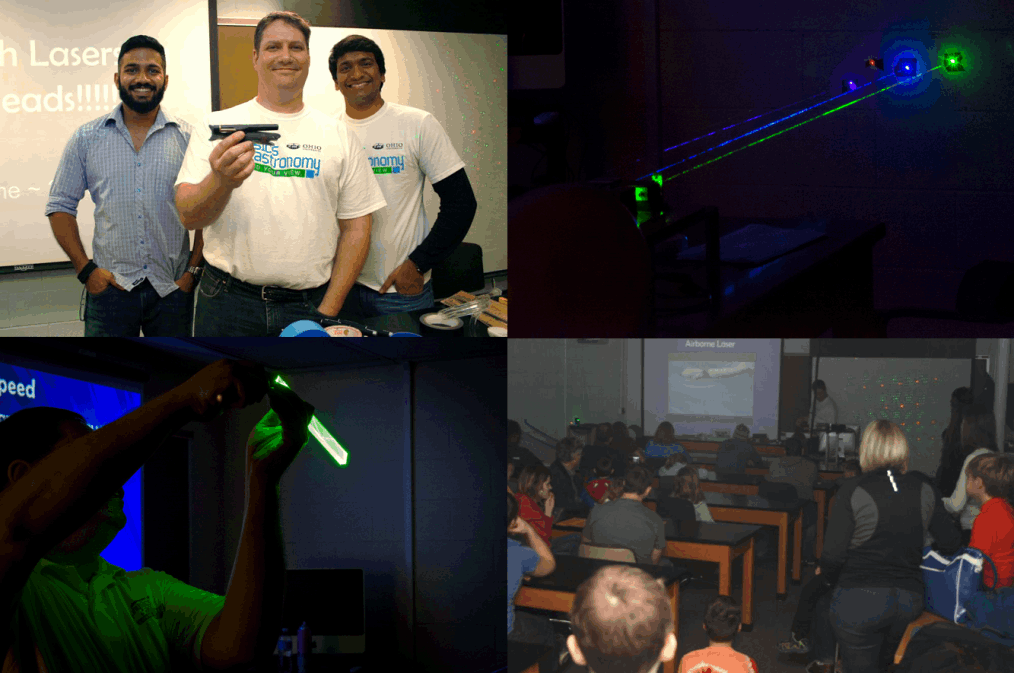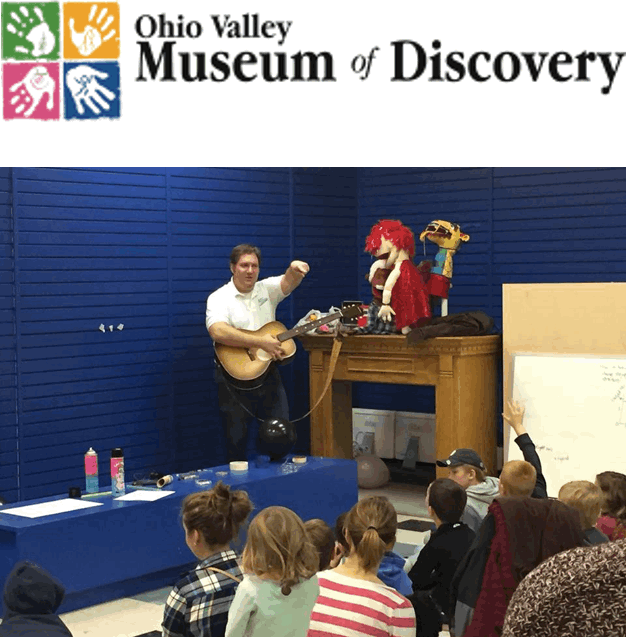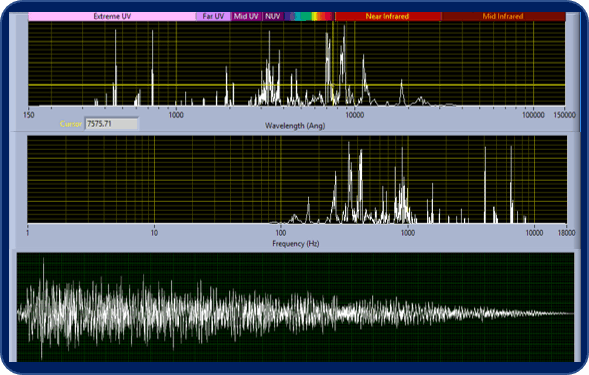Simple harmonic oscillations (SHO) and the underlying concepts of frequency and wavelength are abundantly present in our everyday life. Colors and sounds bombard our senses daily and we, necessarily, think very little of their basic properties. However, as a physicist, the power and central importance of frequency, wavelength, and SHO is undeniable. Making a connection between such seemingly disparate things as light and sound can help foster an appreciation for the fundamental nature of SHO and the power of understanding their role in everyday life. For example, teaching undergraduate courses on optics, light, electricity and magnetism, etc., whenever we arrived at the topic of atomic spectra I would discuss how each element has its own optical fingerprint, allowing us to identify their presence in objects from neon signs to stars. I would mention how each element basically played a chord of optical frequencies, which stuck with me and kept me wondering “what would helium sound like?” The more I thought about it the more intriguing it became, including the possibilities of playing a molecular compound such as caffeine or creating an entire musical piece based on the elements.
In writing the program, the biggest question was how exactly to map the optical frequencies of elemental spectra to audible frequencies. A simple linear mapping wouldn’t work due to the relative separation of lines in the optical spectrum. For example, the frequency difference between a line at 600 nm and one at 601 nm is approximately 832 GHz, vastly larger than the range of audible frequencies. As an alternative, using values collected from the NIST Handbook of Basic Atomic Spectroscopic Data (http://www.nist.gov/pml/data/handbook/index.cfm), it is found that the optical frequencies for the elements in the periodic table span the range from 24 GHz, for Hydrogen, to 17485 GHz, for Lithium. So by simply dropping the ‘giga’ prefix we find that the significands, 24 to 17485, fit nicely into the range of audible frequencies. Though this represents the most straightforward, and potentially intuitive, mapping, other mathematical mappings will be investigated and potentially incorporated into the final product, providing an even richer set of variables for the end user to play with.






